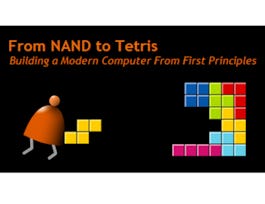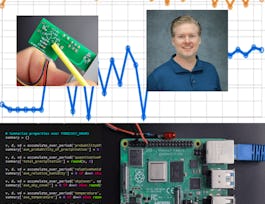In this course, you will learn to design the computer architecture of complex modern microprocessors.



(3,420 reviews)
Details to know
2 assignments
See how employees at top companies are mastering in-demand skills

There are 21 modules in this course
This lecture will give you a broad overview of the course, as well as the description of architecture, micro-architecture and instruction set architectures.
What's included
8 videos2 readings
This lecture covers the basic concept of pipeline and two different types of hazards.
What's included
4 videos1 reading
This lecture covers control hazards and the motivation for caches.
What's included
5 videos1 reading
This lecture covers cache characteristics and basic superscalar architecture.
What's included
5 videos1 reading
This lecture covers the common issues for superscalar architecture.
What's included
4 videos1 reading
This lecture covers different kinds of architectures for out-of-order processors.
What's included
5 videos2 readings
This lecture covers the common methods used to improve the performance of out-of-order processors including register renaming and memory disambiguation.
What's included
5 videos
This lecture covers the basic concept of very long instruction word (VLIW) processors.
What's included
5 videos3 readings
This lecture covers the common methods used to improve VLIW performance.
What's included
6 videos1 reading1 assignment
This lecture covers the motivation and implementation of branch predictors.
What's included
5 videos1 reading
This lecture covers the advanced mechanisms used to improve cache performance.
What's included
6 videos1 reading
This lecture covers more advanced mechanisms used to improve cache performance.
What's included
4 videos2 readings
This lecture covers memory management and protection.
What's included
5 videos2 readings
This lecture covers the vector processor and optimizations for vector processors.
What's included
6 videos1 reading
This lecture covers different types of multithreading.
What's included
6 videos1 reading
This lecture covers the concepts of parallelism, consistency models, and basic parallel programming techniques.
What's included
4 videos1 reading
This lecture covers the solutions for the consistency problem in parallel programming.
What's included
5 videos
This lecture covers the implementation of small multiprocessors.
What's included
5 videos2 readings
This lecture covers the design of interconnects for a multiprocessor.
What's included
4 videos2 readings
This lecture covers the design of interconnects for multiprocessor and network topology.
What's included
5 videos1 reading
This lecture covers the motivation and implementation of directory protocol used for coherence on large multiproccesors.
What's included
6 videos2 readings1 assignment
Instructor

Offered by
Recommended if you're interested in Electrical Engineering

Hebrew University of Jerusalem

Johns Hopkins University
Why people choose Coursera for their career




Learner reviews
3,420 reviews
- 5 stars
78.46%
- 4 stars
15.95%
- 3 stars
3.36%
- 2 stars
0.84%
- 1 star
1.37%
Showing 3 of 3420
Reviewed on May 7, 2017
Quite intense but also quite rewarding. Dr. Wentzlaff's class are captivating and well prepared. The exames are a little bit exhausting, but effectively measure what was learned.
Reviewed on Jan 18, 2021
Great course, but quite difficult. I recommend working through all of the problem sets. The video lectures are more important than the textbook readings.
Reviewed on Sep 10, 2021
It been a nice experience through the learning computer Architecture. But the online certificate is not available that's a bad part.

Open new doors with Coursera Plus
Unlimited access to 10,000+ world-class courses, hands-on projects, and job-ready certificate programs - all included in your subscription
Advance your career with an online degree
Earn a degree from world-class universities - 100% online
Join over 3,400 global companies that choose Coursera for Business
Upskill your employees to excel in the digital economy
Frequently asked questions
Access to lectures and assignments depends on your type of enrollment. If you take a course in audit mode, you will be able to see most course materials for free. To access graded assignments and to earn a Certificate, you will need to purchase the Certificate experience, during or after your audit. If you don't see the audit option:
The course may not offer an audit option. You can try a Free Trial instead, or apply for Financial Aid.
The course may offer 'Full Course, No Certificate' instead. This option lets you see all course materials, submit required assessments, and get a final grade. This also means that you will not be able to purchase a Certificate experience.



